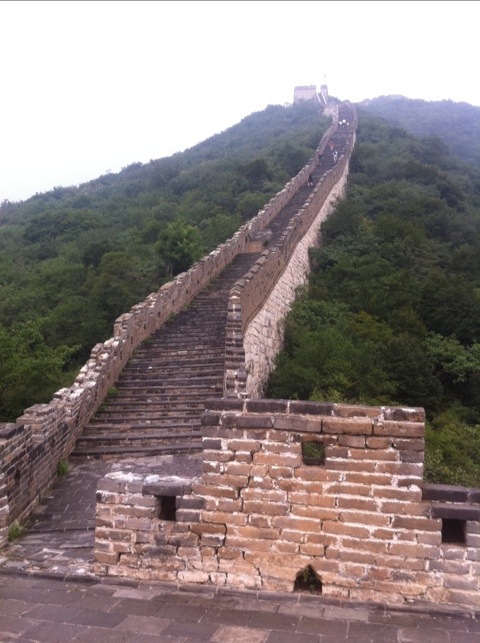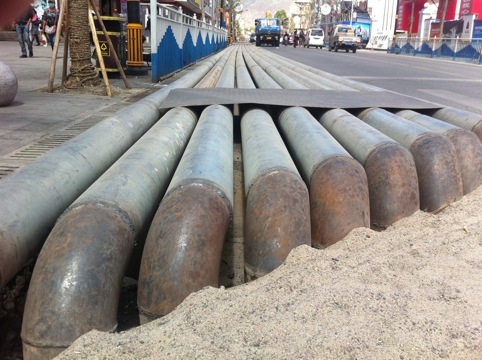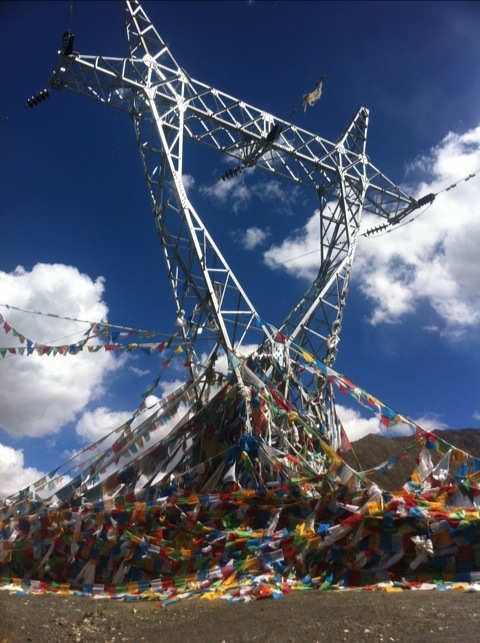 You don’t need to travel here to realise that modern China is about growth and immense scale – but seeing it for yourself really does bring it home.
You don’t need to travel here to realise that modern China is about growth and immense scale – but seeing it for yourself really does bring it home.
The Great Wall seems to have set the tempo. If a book ‘The Great Wall for dummies’ existed, the first fact it would tell you is that it was not one contiguous wall, but many individual sections, broken up by mountains and other impassable landscape. (The second thing it would tell you is that it’s only as visible from space as motorways, which are wider – and there’s no chance of seeing it unaided from the moon, as has been claimed.) However, saying that The Wall doesn’t go over mountains somewhat understates the effort involved in constructing it. Remember, this is the land of Everest – the sheer, near-vertical rocky ascenders would certainly be called mountains back home. The gentle stroll we were expecting up to and along the wall was anything but – see the photo for a sample of it.
It feels a bit like there’s an attempt to prove that humankind owns and hence dominates the natural world no matter what nature has thrown at us. Take electricity pylons for example. Conventionally you’d expect them to follow the path of least resistance – alongside the rivers that cut valleys through the rock. Not here. Some planner has taken a contourless map and a ruler, and just gone for it, meaning that certainly around the major cities the surrounding mountains have glistening silver monuments to modernity adorning their peaks. I pity the construction workers; nothing short of a helicopter could have been used to shift the materials into place.
Even in calm, prayer flag laced Lhasa, the scale of construction is huge. Opposite the hotel where we were staying is a mammoth building site, where they’re constructing the latest shopping mall in China’s enthusiastic embrace of capitalism. Laura thinks I’ve become obsessed by what I’m about to tell you – but let me assure you, it’s nowhere near her addiction to bells (and fountains).

My fascination? They’re using A LOT of water. I don’t mean ‘oh, I left the tap on’, or even ‘let’s run the industrial sprinklers for hours every night’. This is an order of magnitude above: install a whole new set of water mains running above ground for miles across town from at least two different sources. These mains are massive – six or eight welded steel pipes of say eight inches in diameter, running into the distance along the pavement, complete with car-ramps, troughs in the roads so they can cross – and, being spot welded around us while we were there, pedestrian-friendly steps over them. This maze of pipes ends up in four huge water towers, one at each corner of the construction site, into which we could see torrents of water gushing day and night, only to mysteriously vanish again through a network of pipes into the ground around the construction site.
Perhaps they’re creating the world’s largest underground swimming pool? Who knows. This wasn’t what I was thinking of when I said that migration and modernisation was diluting the local culture!
Even the Great Wall has its accoutrement to modernity – a toboggan run from the top down to the car park in the valley below, which we dutifully took in the name of research.
I’m not even going to mention the Ilisu Dam.
The irony is that as I write this, the busy road from Lhasa has turned into a bmx-style dirt track, with our bus becoming a temporary rollercoaster. For all the prosperity in modern China, it remains a country with extreme contrasts – gleaming urban skyscrapers against a backdrop of massive rural poverty. It may well be the world’s next superpower, but it is one whose GDP is the same as that of Namibia, at $6,000 a year. Multiply that up by 1.4 billion people and you have something colossal – but then when you think of a landscape that stretches from the Himalayas to the Straights of Japan, you realise just how spread out everything is and in reality just how little has been tamed let alone dominated by humankind.
Simon

